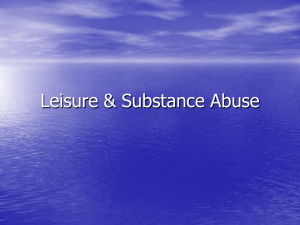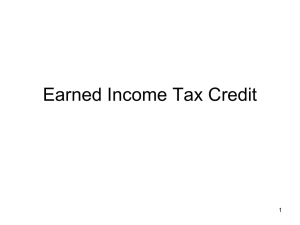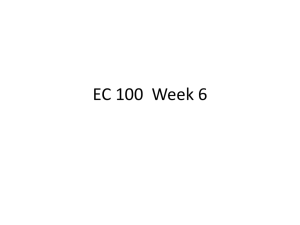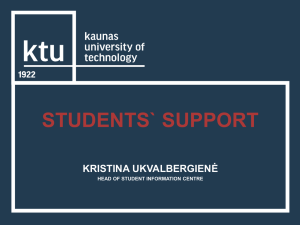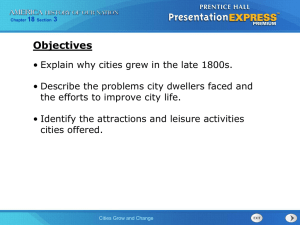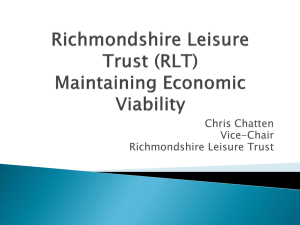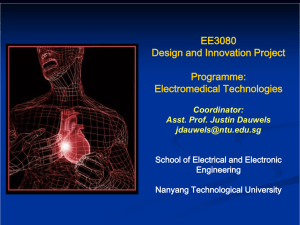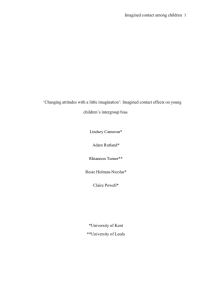Program Design
advertisement
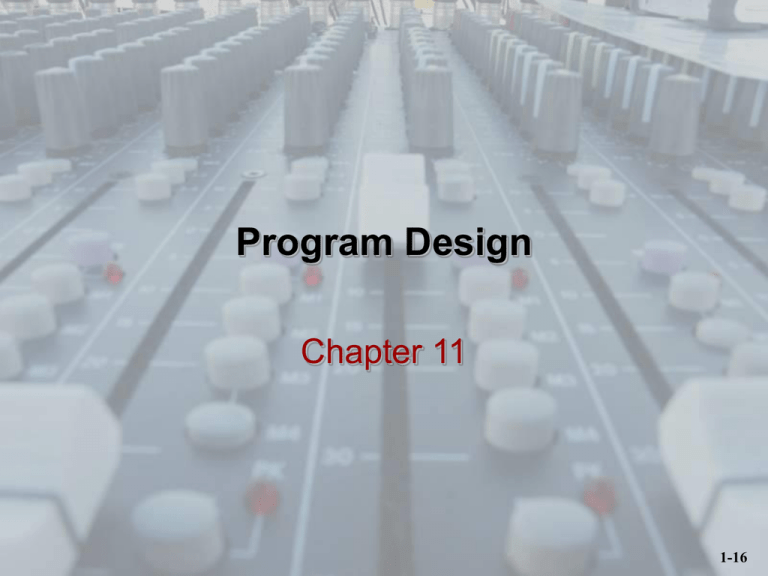
Program Design Chapter 11 1-16 Program Design • Specifies the details of how a program will actually be operated to facilitate a leisure experience for participants • Planning – – the step-by-step action scenarios and configurations of the six program elements (situated activity system) 1. 2. 3. 4. 5. 6. Interacting People Physical setting Leisure Objects Rules Relationships Animation – these will guide participants through the social interactions necessary 2-16 to facilitate the leisure experience intended by the designer Program Design (Cont.) • Requires a technique that enables programmer to – anticipate and predict social interaction and to – vicariously experience a model of the program 3-16 Program Design Model • Design Goals – General to specific – Outcomes that will result from participation • Design components and elements – Means through which design achieved – Objects of the experience • Design tactics – Process of implementation; • technique to develop the design intended. 4-16 Program Design Model DESIGN GOALS (OUTCOMES) 1. Leisure Experience 2. Instrumental Goals, agency goals, Individuals’ goals DESIGN COMPONENTS (MEANS) DESIGN TACTICS (PROCESS) 1. People 2. Setting 3. Objects 4. Rules 5. Relationships 6. Animation 1. Imagined interactions of sequences, transitions 2. Forecasts 5-16 Program Design Model (cont.) • Design Goals – first element in which the design must specify the design goals, or program outcomes that will result from participation. • Leisure experience, freedom, positive affect, fun and enjoyment, relaxation (Chapter 2) • Additional sources of goals; Instrumental goals, agency goals, individual goals (needs assessments) • Design components – the means through which the design will be achieved • People, physical setting, leisure objects, rules, relationships, animationinvolves determining how the program will move through time and how changes in the other five elements will occur as the program progresses • Design tactics – technique to develop the design intended. • Candidate plans with imagined interaction of 6-16 More on Techniques for Implementing Program Design • Design Tactics: – The actions that must be implemented to animate a program, i.e. to actually operate it – Specific actions that are intended to facilitate implementation of a plan and to produce progress toward their goal – Developed through imagined interactions • simulating the possible social interactions of a program in his/her mind and experimenting with various configurations of the key elements of program production. –Allow for rehearsal, and perhaps discovery, of situation-dependent behaviors, and……..? – HAUNTED HAYRIDE? • Projective Imaging 7-16 Projective Imaging Techniques • Visualization of imagined interactions • Vicariously experience program, step by step • Need to force ourselves to visualize a program differently – Externally-Observe participating as the leader. • Goal to experiment w/ various leadership styles and strategies. – Internally-experience program beginning to end: • Goal to understand how the program will effect the patron. – Change your physical viewpoint-What would the program look like to a 3 year old? – Change your social role-Parent, spectator, referee. • What is the purpose of this? 8-16 Five Planned Forecasts • Use external imaging to visualize the entire operation of a program. • Use internal imaging to experience the program from the participant’s perspective. • Use internal imaging to experience the program from the perspective of each of the participants who may be in the program, for example, spectators, parents, referees, and so on. • Use external imaging and again visualize the entire operation of the reconfigured program from the program manager’s perspective. • Use extern and internal imaging to visualize the final program with imagined interactions, changing roles from observer to participant and give special attention to evaluating how the program operation, as currently configured, addresses the design goals developed earlier. 9-16 Program Design Goals • Final stratum of goals in the hierarchy of goals and objectives • Evolve from planning (3-5 year), program (short term), and management goals • Provide direction and definition to a program • Articulate what is supposed to happen to people as a result of their participation – Shift from “what staff will do” – management – to – “what will happen” to individuals in the leisure experience. 10-16 Program Design Goals (cont) • Developed with varying levels of specificity – A Program needs to be designed to facilitate the experiences outlined in the program goals • Not exhaustive; complete details will be provided in the program plan (blueprint). • Provide form and direction to the program • Basic outline of the experience that will result from participation in the program. 11-16 Program design standards • Program design is often dictated by the program standards used in an agency. – What standards? • An agency may develop a list of goals and objectives for a specific type of program, and the standards provide a generic design 12-16 Program Elements of a Theme Program • Activities • Lighting • Refreshments • Prizes • Decorations • Music • Entertainment • Gimmicks/ giveaways • Audio-visual • Costumes 13-16 Program Design Summary • Participation in a program can be thought of as a sequence of experiences • Programming involves intervening in social interaction • Visualization techniques-simulation • Programmer needs to be cognizant of the emergent nature of the leisure experience 14-16 Program Design? • Program design is just like a coaches’ game plan! 15-16 Program Design summary • So far, is what you have in mind still consistent with: – Mission – Needs Assessment – Goals and objectives • Program Goals • Series of checks and balances to make sure that you are working towards your goals! 16-16

